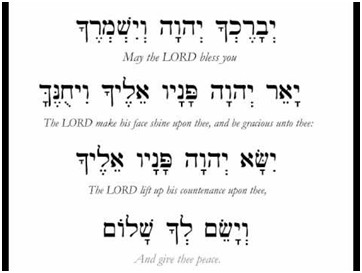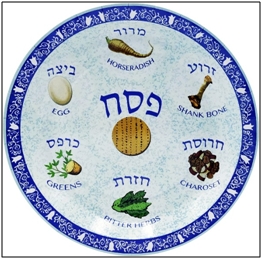Naso
This week in Torah we read the book of Naso – which has one of our most significant blessings:

Many Jews recite this blessing over the heads of their children on Friday nights before reciting Kiddush. It is a special moment in the family when parents come up to their children and acknowledge the circle of blessing they live within. The blessing originates as a Blessing of the Kohanim, the Priestly class, and today in more traditional synagogues on certain days the Kohanim are still called to raise their hands, separate their fingers, and recite this blessing over their congregants. It is a ceremony both mystical and profoundly touching.

 We are just days before First Night Seder and when we begin to sing, Mah nishtana ha Laila ha zeh, we will have a very different answer on our tongues than the usual responses! Most of us are used to sitting with family and friends, new and old, and enjoying favourite Seder foods with the often raucous commentary. This year we will each be at home – but together at the same time. If you would like to join our community Seder, please let us know by sending Kolot Mayim an email (
We are just days before First Night Seder and when we begin to sing, Mah nishtana ha Laila ha zeh, we will have a very different answer on our tongues than the usual responses! Most of us are used to sitting with family and friends, new and old, and enjoying favourite Seder foods with the often raucous commentary. This year we will each be at home – but together at the same time. If you would like to join our community Seder, please let us know by sending Kolot Mayim an email (
Naso and Equality
June 1, 2020 by Rabbi Lynn Greenhough • From the Rabbi's Desk Tags: equality, naso •
Dear friends,
The sun is trying. Garden party season is virtually upon us – we live in hope. The blossoms went to my head last week– this week is Parashat Naso!!
I don’t comment on world events very often – we have multiple sources of information available to us these days, with whatever built-in biases they may hold. But as we watch the large cities of the United States burn, and black families post story after story of their desperation to keep their sons (in particular) safe, as we watch the events unfolding from the murder – I think I am safe in using this word – of George Floyd, I have to say something.More